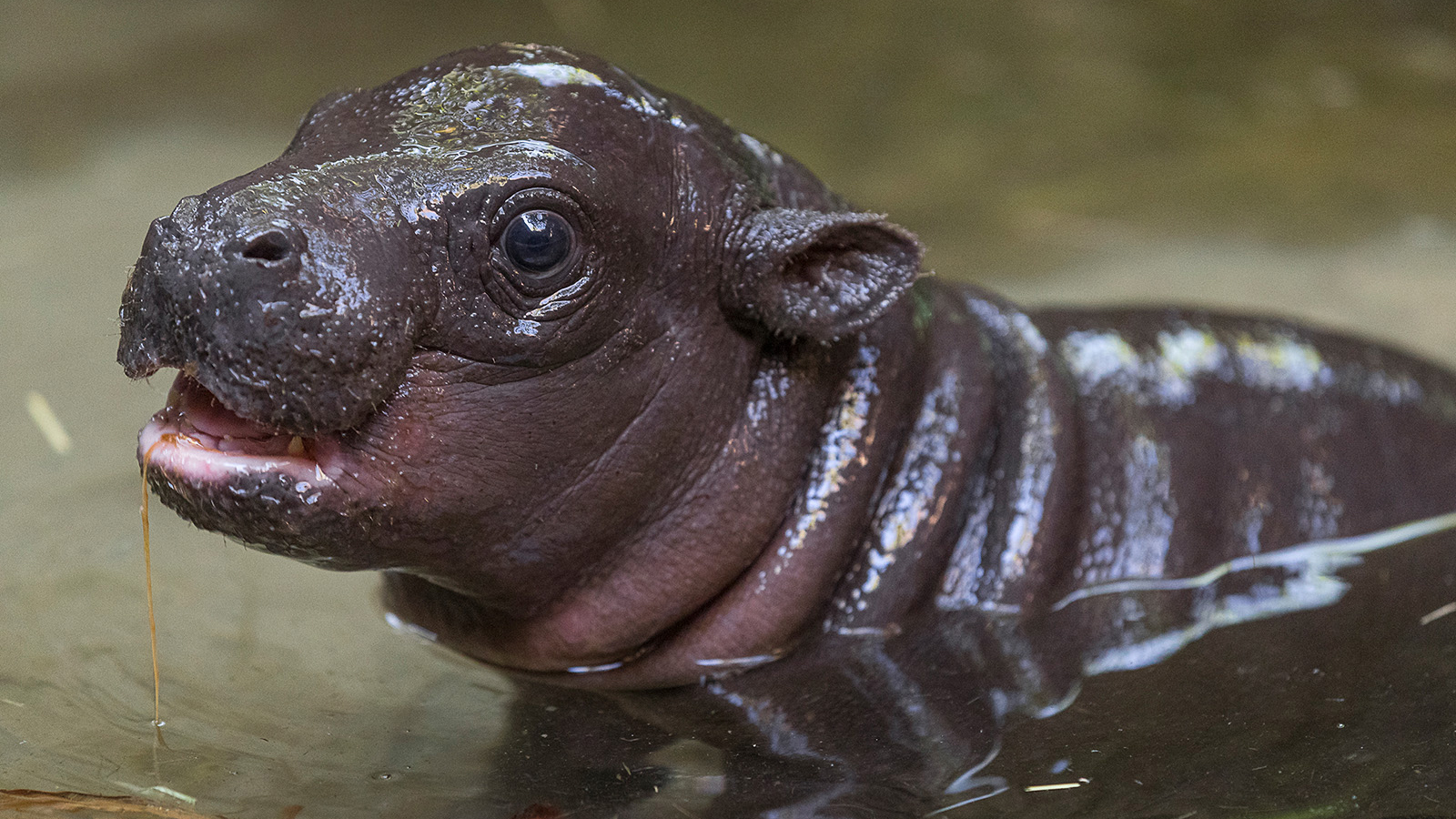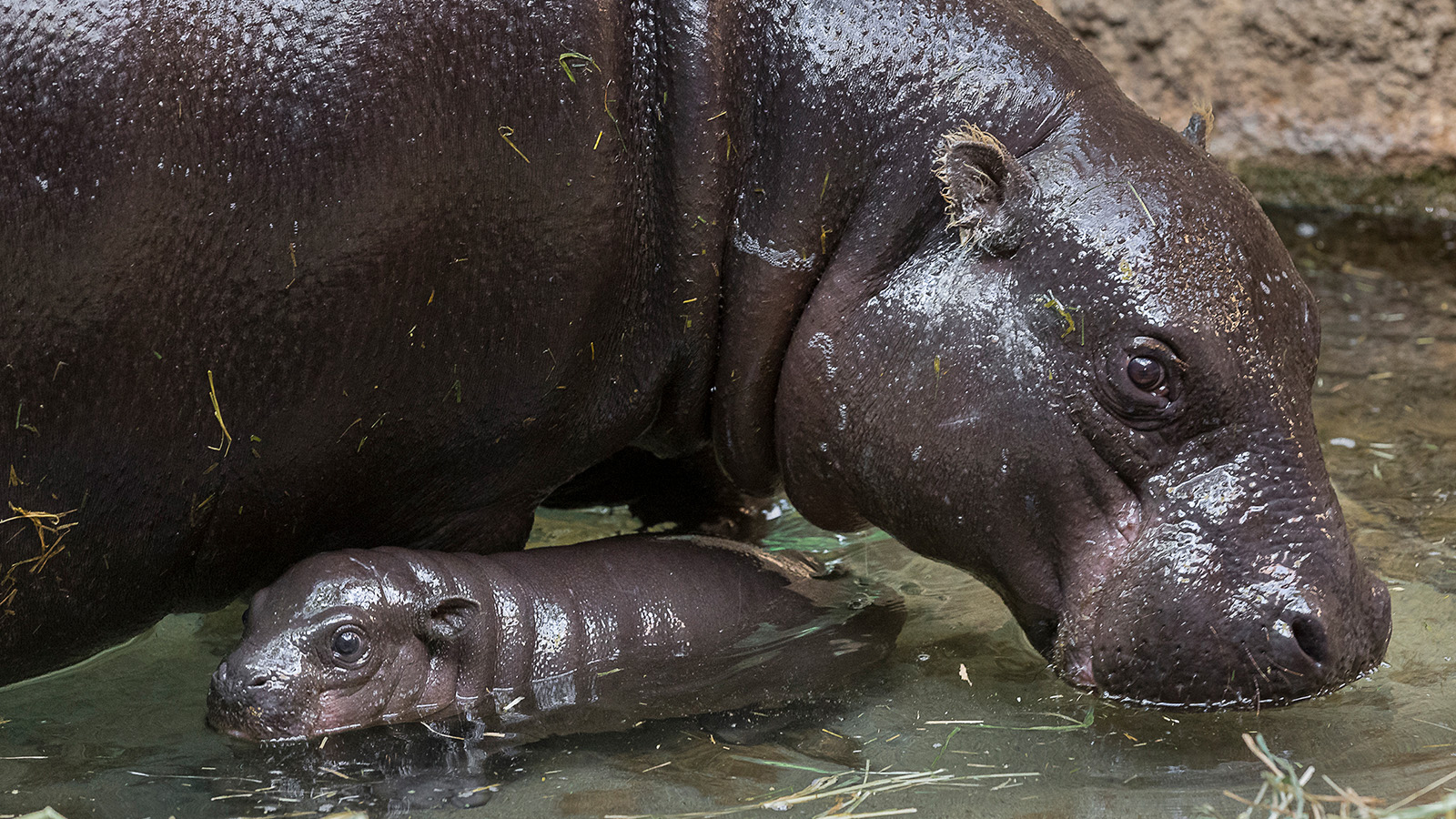Baby pygmy hippo born at San Diego Zoo, conquers the internet with cuteness
Fewer than 2,500 pygmy hippos remain in the wild.

The San Diego Zoo recently announced its newest (and arguably cutest) arrival: a newborn male pygmy hippo, born on April 9 to its 4-year-old pygmy hippo mama Mabel.
Within hours of birth, the very tubby youngster was standing up and following its mother around, toddling after her in the hippos' indoor habitat, zoo representatives said in a statement.
The baby, which has not yet been named, weighed 12.4 lbs. (5.6 kilograms) at birth and now weighs about 25 lbs. (11 kg). This is the first successful pygmy hippo birth at the zoo in more than three decades, offering hope for the future of this endangered species, according to the statement.
Related: Photos: World's cutest baby wild animals
In the maternity "ward" of the hippo habitat, the calf now has access to a pool, after first testing the waters in a shallow tub. Over the last few weeks, the baby demonstrated that it was able to close its nostrils and hold its breath underwater.
As their name implies, pygmy hippos (Choeropsis liberiensis) are significantly smaller than river hippos (Hippopotamus amphibius), according to the San Diego Zoo. Adult pygmy hippos weigh about 350 to 600 lbs. (160 to 270 kg), while river hippos can weigh up to 10 times more. The heads of pygmy hippos are also blunter and rounder than those of their bigger hippo cousins, and pygmy hippos' eyes are located on the sides of their heads rather than at the top.
Pygmy hippos often look shiny and slick even when they aren't in the water, thanks to a pinkish fluid called "blood sweat" that oozes from their skin. This liquid acts like a moisturizing sunscreen; it keeps their skin from drying and cracking in the heat and protects the hippos from sunburn, according to the zoo.
Get the world’s most fascinating discoveries delivered straight to your inbox.

Fewer than 2,500 pygmy hippos remain in their native habitats in West Africa, where they live in forest rivers in Guinea, Sierra Leone, Liberia and Côte d'Ivoire.
Mabel and her calf will remain separated from the calf's father, a 13-year-old named Elgon, as pygmy hippos do not typically live together as families, zoo representatives said. In about a month, the baby and his mother will emerge from their seclusion in the indoor enclosure and will begin taking turns with Elgon to spend time in the main hippo habitat.
- Images of an ancient hippo ancestor
- Cute alert! Adorable photos of giant panda triplets
- Cute clouded leopard cubs born in Denver (photo)
Originally published on Live Science.
OFFER: Save 45% on 'How It Works' 'All About Space' and 'All About History'!
For a limited time, you can take out a digital subscription to any of our best-selling science magazines for just $2.38 per month, or 45% off the standard price for the first three months.

Mindy Weisberger is a science journalist and author of "Rise of the Zombie Bugs: The Surprising Science of Parasitic Mind-Control" (Hopkins Press). She formerly edited for Scholastic and was a channel editor and senior writer for Live Science. She has reported on general science, covering climate change, paleontology, biology and space. Mindy studied film at Columbia University; prior to LS, she produced, wrote and directed media for the American Museum of Natural History in NYC. Her videos about dinosaurs, astrophysics, biodiversity and evolution appear in museums and science centers worldwide, earning awards such as the CINE Golden Eagle and the Communicator Award of Excellence. Her writing has also appeared in Scientific American, The Washington Post, How It Works Magazine and CNN.



